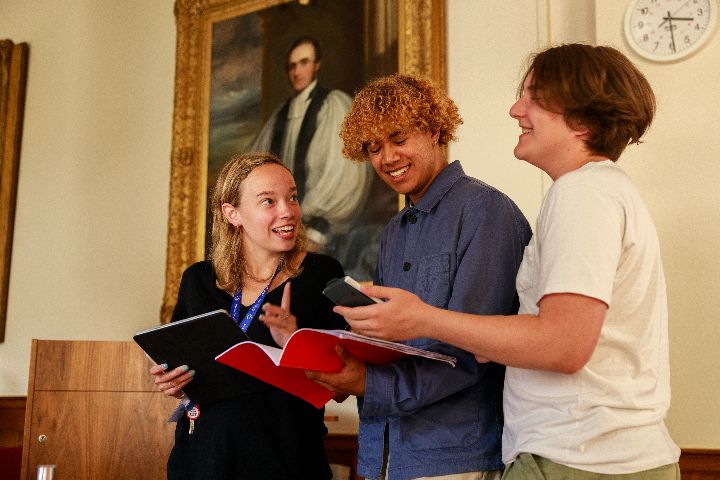The evolution of legal systems is not just a journey through time but a reflection of human society’s progress. Today’s legal landscape, with its intricate rules and diverse applications, has its roots in ancient times. This article delves into the key historical periods that have shaped modern law. We aim to provide aspirational youths with clarity and direction in their exploration of legal history.
Ancient Legal Systems
One of the earliest and most significant legal documents is the Hammurabi Code, dating back to ancient Mesopotamia. It set out laws covering various aspects of daily life, establishing a legal framework for trade, property, and personal conduct. The code’s principle of “an eye for an eye” has echoed through legal history, influencing subsequent legal systems. This ancient code exemplifies the enduring nature of legal principles and their influence over millennia.
Roman Law, known for its comprehensive nature, detailed citizens’ rights and responsibilities. Its principles, such as the presumption of innocence and the importance of written law, continue to influence contemporary legal systems. Roman Law’s systematic approach laid the foundation for many legal practices still in use today, reflecting the depth and foresight of ancient legal scholars.
(image suggestion – Image of the Hammurabi Stele or ancient Roman legal texts)
Medieval Law: Feudalism and Canon Law
During the Middle Ages, secular and religious laws intersected uniquely. Feudal laws primarily dictated land and property rights, whereas the Church’s canon law governed moral and religious matters. The development of common law in England marked a pivotal shift in the 12th and 13th centuries, focusing on judicial decisions and legal precedent, which are central elements in many of today’s legal systems. Legal precedent refers to the principle that future cases should be decided based on previous judicial decisions in similar circumstances, ensuring consistency and predictability in the law. This period’s legal framework significantly influenced later legal systems, particularly in terms of property and individual rights.
(image suggestion – Medieval manuscripts or a map showing the spread of common law)
The Renaissance and Reformation: Legal Evolution
The Renaissance era introduced a humanist influence on law, emphasising individual rights and rational-legal processes. Key thinkers of this period, such as Erasmus and Thomas Moore, played a vital role in shaping legal thought. Erasmus, in particular, advocated for a more ethical approach to law, emphasising the importance of moral values and the application of Christian principles in legal systems. Thomas More, on the other hand, emphasised the role of conscience and reason in the law, advocating for a legal system guided by rationality and equity. Concurrently, the Reformation reshaped legal thought, challenging the Church’s authority and establishing national legal systems in Europe. This era set the stage for more secular and state-centric legal frameworks, significantly impacting the evolution of modern legal thought and practice.
(image suggestion – Portraits of Renaissance thinkers or illustrations of European courts)
Join the Immerse Education 2024 Essay Competition
The Immerse Essay Competition is open for 2024! Follow the instructions to write and submit your best essay for a chance to be awarded a 100% scholarship.

The Enlightenment: The Birth of Modern Legal Theories
The Enlightenment, which occurred during the 17th and 18th centuries, was a seminal period in legal history, fostering the development of theories that form the basis of contemporary legal principles. Philosophers like John Locke and Charles-Louis Montesquieu introduced groundbreaking ideas about human rights and the separation of powers. For instance, Locke’s theory of natural rights, which proposed that individuals inherently possess rights to life, liberty, and property, deeply influenced the American Declaration of Independence. Similarly, Montesquieu’s concept of the separation of powers, which advocated for dividing governmental authority into legislative, executive, and judicial branches, became a cornerstone of the United States Constitution. This era’s emphasis on codifying laws and establishing constitutional governments laid the groundwork for modern legal systems, highlighting the enduring influence of Enlightenment thought.
(image suggestion – Engravings or portraits of figures like Locke and Montesquieu)
The 19th Century: Industrialization and Law
The 19th century witnessed significant legal transformations in response to the challenges of industrialisation. This period saw the genesis of labour laws and social legislation, addressing the needs of an increasingly industrial and urban society. Additionally, the era marked significant advancements in international law, with treaties and conventions beginning to shape a more interconnected global community.
The 20th Century: Law in a Globalized World
The 20th century was marked by the emergence of international legal bodies and a focus on human rights law, reflecting the complexities and interdependencies of a globalised world. This period saw groundbreaking legal advancements in areas like civil rights, environmental law, and international relations, setting precedents that continue to influence global legal practices. Landmark cases during this era reshaped legal perspectives and practices, underlining the dynamic nature of legal systems.
(image suggestion – Iconic 20th-century legal moments, like international courts or civil rights movements)
Contemporary Legal Challenges
Today, law faces novel challenges posed by the digital age, including internet law and privacy concerns. Global issues like cybersecurity and international trade disputes also demand legal attention, reflecting the field’s ever-evolving nature. The contemporary legal landscape continues to be reshaped by technological advancements, necessitating continual adaptation and learning.
(image suggestion – A modern law firm with advanced technology)
The Future of Law: Digitalization and Beyond
The future of law is increasingly intertwined with technological advancements, particularly in the realms of AI and machine learning. This intersection is giving rise to novel legal domains such as space law, biotechnology, and digital rights, presenting both challenges and opportunities for legal practitioners and scholars. As these new fields emerge, they prompt a reevaluation of traditional legal concepts and the development of innovative legal frameworks.
Final Thoughts
The history of law demonstrates its dynamic nature and enduring relevance. This journey through legal history not only informs us about our past but also guides us in shaping a more just and equitable future. This historical perspective empowers young aspiring legal minds to navigate the complexities of contemporary legal challenges and contribute meaningfully to the ongoing pursuit of justice and equity in our ever-changing world.
Looking to further your academic understanding of Law? Read more about our Law Summer programmes with Immerse Education today.



















